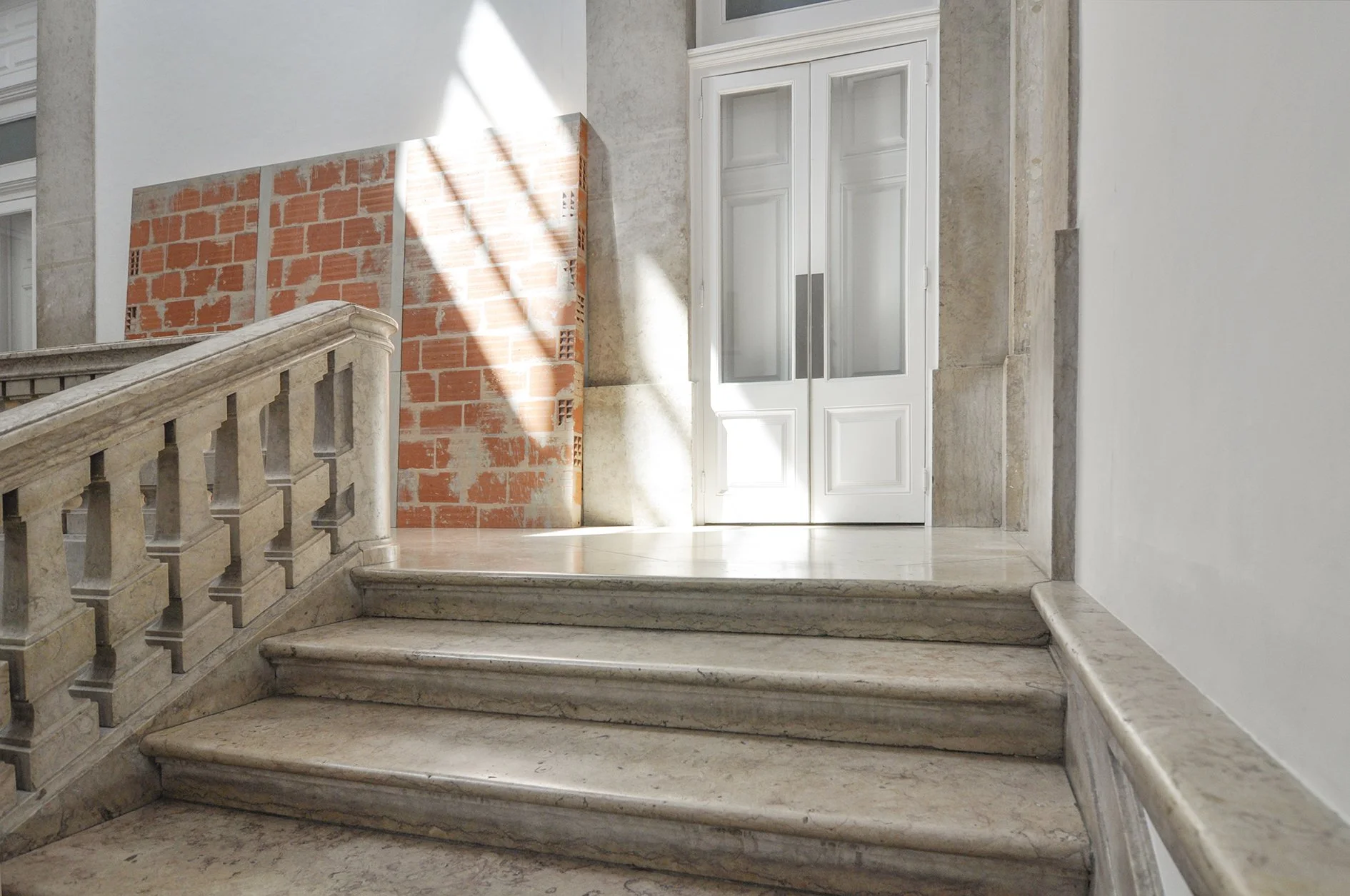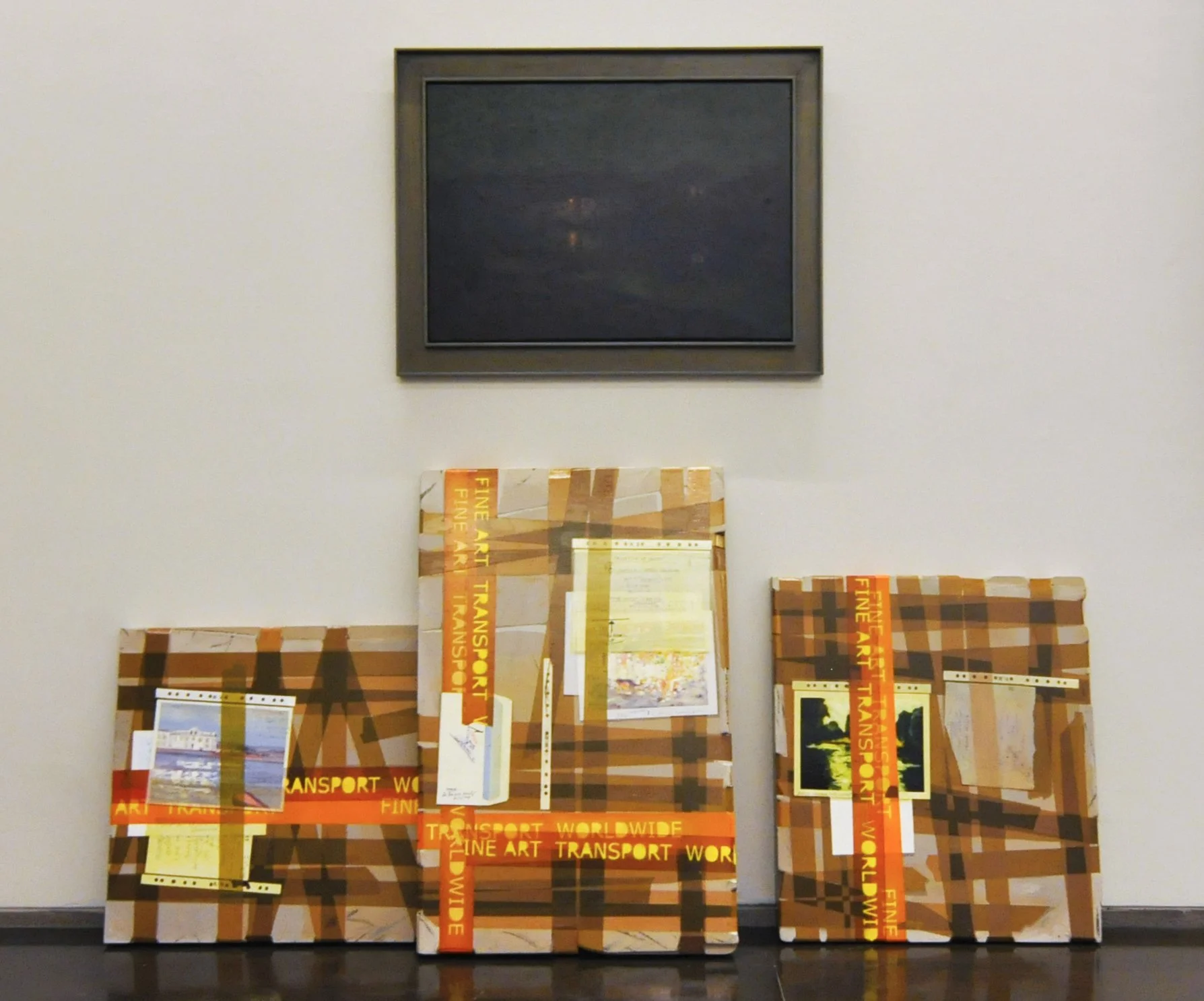«(In)dispensable or The painting that disrupts the museum's collection» at Museu Nacional de Arte Contemporânea Lisboa, Portugal
14.05—29.09.2019
curated by Emília Ferreira
« (…) An exhibition is like a stage set, and the way a collection is presented is a way of creating a particular narrative. So the act of inserting foreign works into such a narrative means implanting a perhaps dissonant voice and disturbing the status quo by allowing other possibilities and sowing doubt.
This is precisely what Rui Macedo had in mind, as the loaded, ironic title of his project makes clear: (In)dispensable or The painting that disrupts the museum's collection. This group of more than two dozen paintings, conceived as a site-specific installation, was deliberately designed to create a specific, provocative disturbance. Referring to authors, themes and works in the museum's collection (and other public collections), and spanning almost 100 years of Portuguese art, the irony of Rui Macedo's work extends to the less visible meanders of the exhibition, leaving nothing out, from the choice of works and their location in the gallery space, to the previous transport of the artworks and their packaging. (…) »
Emília Ferreira, excerpt from the catalogue essay, 2019
« The way in which his research deals with architectural space, image and collections reflects a perspective that is highly attuned to the poetics of artists from different historical periods. This perspective brings out an element that often surpasses expectations of contemporary art: humour.
(…) Given these constant themes in his work, I would venture to suggest that Rui Macedo's research can be likened to a particular kind of institutional critique. His approach differs from the classic works commonly associated with this critique - Andrea Fraser's guided tours, Fred Wilson's decolonial gaze, Hans Haacke's surveys or, to go back even further, Marcel Broodthaers's imaginary museums. Macedo's way of thinking critically about art institutions is not necessarily expressed through words, performance or explicit discourses. By addressing works in a museum that have remained in place for years, and by inserting new works that confuse the public's perspective - leading the viewer to question the boundary between the historical and the contemporary, between collection and intervention - Macedo inevitably articulates a method of critiquing visual art institutions, their fixed positions and their closed, typically vertical and hierarchical discourses.
One of the titles of his new project, conceived specifically for the National Museum of Contemporary Art - Museu do Chiado in Lisbon, carries some of this critical perspective: 'A painting that unsettles a museum collection'. Founded in 1911, the museum, which has undergone several architectural changes in its more than 100-year history, houses a public collection of Portuguese artworks dating back to 1850. Although contemporary in name, the breadth of its historical scope means that the museum holds works that we would now consider modern and contemporary. At the heart of its construction and existence is also a discourse of nationalist identity - an institution specifically dedicated to 'Portuguese art' from a historical perspective.
(…) Having walked through Macedo's exhibition and analysed its various options, I am convinced of the critical nature of his chameleonic paintings. In a subtle, precise way, often disguised by paintings that only deceive the eye, the artist comments on the history of art in Portugal and the institutions he infiltrates.
(…) Through Rui Macedo's research, we discover that an act of criticism doesn't always have to be done with words, let alone by shouting - that there is room to be critical by creating new images and always keeping a smile in the corner of one's mouth. »
Raphael Fonseca, excerpt from the catalogue essay, 2019
« (…) I often recall the image of a painting by Paul Klee, Highway and Byways6, from 1929, which I always remem- ber with a different title, One way and many ways. This is precisely what is happening in this mosaic which unfolds and grows continuously, in height, width, depth, in the real and the imaginary, without limits, a labyrinth of ways, all of them highways? All of them byways? Ways that one must walk down and... that’s enough. A museum is like this, or it should be. This museum, invaded by Rui Macedo’s truth- ful lies, temporarily and necessarily, functions like this, as a place of deception, a forest of illusions, and, why not? A Comedy of Art.»
José Luís Porfírio, excerpt from the catalogue essay, 2019
-
The solo exhibition "(In)dispensable or The painting that disrupts the museum's collection" curated by Emília Ferreira, was held from May 14 to September 29, 2019, at Contemporary Art Museum, in Lisbon. Portugal.
-
May 14 | 6.30pm
Talk and guided tour with Emília Ferreira and Rui Macedo.
Free entryJuly 30 | 5pm
Talk and guided tour with Eduarda Neves and Rui Macedo.
Free entry -
On the occasion of this exhibition, it was published the catalogue «(In)dispensable or The painting that disrupts the museum's collection» (PT/EN) with essays by Emília Ferreira, Raphael Fonseca e José Luís Porfírio.
-
Emília Ferreira has a degree in Philosophy and an M.A. and Ph.D. in Contemporary Art History. She is an integrated researcher at IHA/FSCH/NOVA; a researcher associated with the Social Sciences and Humanities Research Council project, University of Victoria, British Columbia, Canada, and CIEG/ISCSP-ULisboa. She is an art historian, lecturer, curator, art educator and fiction writer. She has been director of the National Museum of Contemporary Art - Museu do Chiado since December 2017.
-



